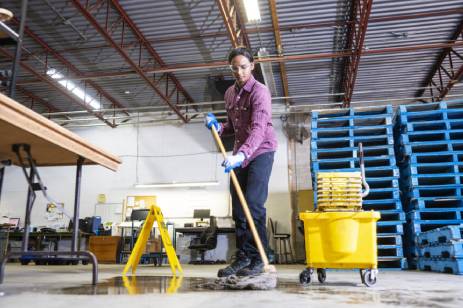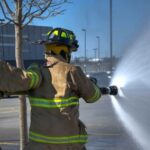Slips, trips, and falls are among the most common accidents in both the workplace and at home, leading to a significant number of injuries annually. Understanding and addressing the root causes of these accidents is essential for creating a safer environment for everyone.
Identifying Common Causes
The first step in prevention is to identify the common causes:
- Slips occur due to a lack of friction between the footwear and the walking surface, often due to wet or oily floors.
- Trips happen when an obstacle causes a person to lose their balance, like clutter, uneven surfaces, or poorly lit areas.
- Falls can be a result of slips or trips but also include falls from heights like ladders, stairs, or platforms.
Effective Strategies for Prevention
Preventive measures can significantly reduce the occurrence of these accidents:
- Maintain Clean and Dry Surfaces: Regular cleaning and immediate addressing of spills are crucial. Use absorbent mats in areas prone to wetness.
- Proper Lighting: Ensure all areas, especially walkways and staircases, are well-lit to improve visibility.
- Remove Tripping Hazards: Keep floors clear of clutter, cords, and anything else that can cause tripping. Secure rugs and mats to prevent them from moving.
- Signage and Warnings: Use signs to warn of potential hazards, like wet floors or uneven surfaces.
- Safe Footwear: Encourage wearing shoes with good traction, particularly in environments where floors may be slippery.
Training and Awareness Programs
Regular training and awareness campaigns can enhance safety:
- Educational Sessions: Conduct sessions to educate about the importance of keeping spaces clutter-free and reporting potential hazards.
- Safety Signage: Display clear and visible safety signs that remind everyone of the best practices to prevent slips, trips, and falls.
- Encourage Reporting: Create a culture where employees or family members feel comfortable reporting hazards.
Design and Ergonomics
The design of spaces plays a vital role in prevention:
- Ergonomic Design: Arrange furniture and equipment to allow clear walkways and prevent obstructive setups.
- Flooring Choices: Use slip-resistant flooring materials, especially in areas that are prone to moisture.
- Install Handrails and Guards: In areas like staircases and ramps, provide handrails and guardrails to prevent falls.
Emergency Response and First Aid
Despite all precautions, accidents can still occur:
- First Aid Training: Ensure availability of first aid kits and trained personnel to respond to any incidents.
- Clear Procedures: Develop and communicate clear procedures for responding to and reporting accidents.
Conclusion
Preventing slips, trips, and falls is a collective responsibility that requires vigilance, awareness, and proactive measures. By implementing these strategies, we can create a safer environment, reducing the risk of injuries and ensuring the well-being of everyone in our homes and workplaces.











 LOOKING FOR A JOB?
LOOKING FOR A JOB?